Norway: Life Above the Arctic Circle


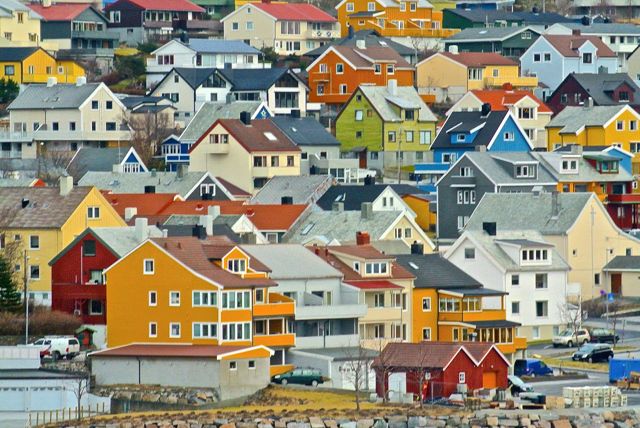
Norway used to be one of Europe's poorest countries. This was certainly true until after World War II, when the northern part of the country had to be totally rebuilt due to the Nazis' policy of total destruction as the German military made their retreat southward. The Norwegian people showed a commendable national spirit of sharing the burdens of reconstruction, that "culture of equality" that I described in my previous blog. Norway aligned itself with the other Scandinavian countries, Sweden, Denmark, Finland, and Iceland, in establishing a welfare state that provides a high quality of life to all, regardless of income. That high quality of life is based on: free education through the university level, free healthcare for all, a highly developed public transportation system (roads, bridges, tunnels, trains, and this Hurtigruten water taxi service), and an extensive energy industry. Norway uses its mountainous geography, mostly unsuitable for agriculture, to harness hydroelectric power, which has been sold to other European countries for years. Norway has so much hydroelectric power, that their excess power is used to pump water back up into reservoirs after it passes through the dams, keeping the reservoirs full all summer, long after most of the winter snows (which fill the reservoirs) have melted.


On top of this energy surplus, in the last few decades large petroleum deposits were discovered off the Norwegian coast. Offshore oil platforms have created a financial boom for the country. After all the costs of extraction, refining, and transportation costs have been covered, the Norwegian government has amassed a "rainy day" fund of almost eight billion dollars. As I mentioned in the previous blog, the government doesn't simply give the money to its citizens as the oil-rich Persian Gulf states do (though some Norwegian citizens would like to claim their share of the profits). The resulting windfall profits now make previously poor Norway one of the richest countries in the world (on a per-capita basis).
Many Norwegians are employed in the oil extraction industry. The boyfriend of one of our ship's waitresses works on a "boatel," a floating hotel (holding up to 450 people) for offshore oil workers, who travel to and from the mainland via helicopter. This boatel is moveable (albeit slowly), unlike the oil platforms, which are anchored to the ocean floor. Our waitress reported that the boatel is designed to tolerate 20-meter/over sixty-feet-high waves. From the storms we've experienced on the Trollfjord this week, I wouldn't be comfortable in a big storm on a floating low-powered platform miles from shore.

A result of all this Norwegian prosperity is that Norway is expensive. When even the visiting Swedes complain, you know it's expensive! Bill and I had our most expensive microbrew beers at $18/glass. (This was exceeded only by my $20/glass beer in Qatar last year.) An a la cart modest meal for two without alcohol can easily cost $80-$100 in a regular restaurant, i.e. not an expensive one. Norwegian sweaters (beautiful, soft, famous) sell for hundreds of dollars. The general cost of living makes the cost of our Hurtigruten cruise seem like a Norwegian bargain. (Of course, the cruise prices will go up in the summer high season.)
It's very interesting that, in spite of Norway's energy surplus and high standard of living, conservation is practiced throughout society. For example, it's typical in the bathrooms of public buildings that the lights are off until motion-activated by someone walking into the facility. At shopping malls and at the airport, escalators are off until someone steps on them, at which point they work long enough to carry the rider and then turn themselves off automatically. Most toilets have light/heavy flush options. It's ironic that Norwegians are so frugal with their water resources when, at least this time of the year, they are drowning in rain and snow.
The couple that work as entertainers on the ship are a very talented musical duo from Rumania. It is interesting that their previous gig just prior to coming to the ship was in Ukraine. (They had not witnessed any turmoil where they lived and worked there.) They have previously had gigs in Japan, Dubai, Hong Kong, and around Europe. They said that the Norwegian gig is the best paying of all. In fact, they plan to retire from touring, as soon as their young son reaches school age, except for the occasional 22-day Norwegian contract. Someday we might visit them in Bucharest.
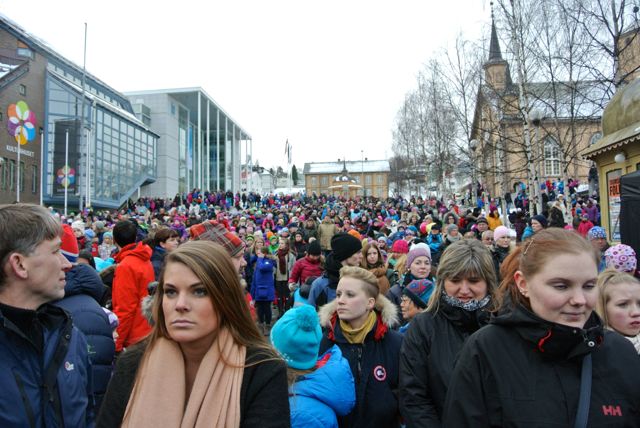
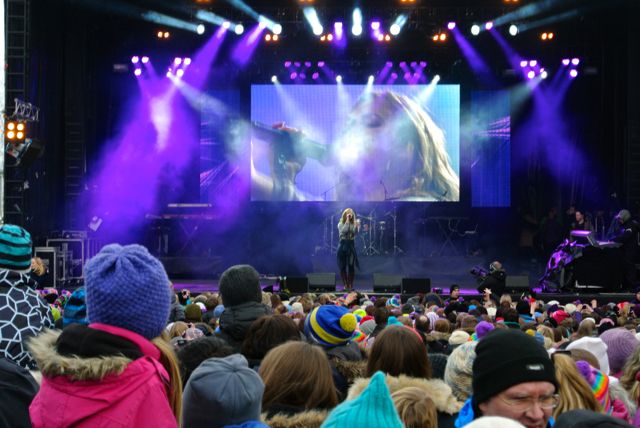
I learned one chapter of history that I had been completely unaware of until now. This concerns the Pomors. The Pomorian people were the maritime traders from the White Sea area of Russia, past the present day city of Murmansk. (Check your map.) The Pomors traded with the Norwegian inhabitants of "Finmark", that part of northern Norway next to Russia, which previously belonged to Finland. The Pomors were much richer than the Norwegians. They bought fish from the Norwegians, in return for manufactured goods, religious icons, exotic foods, fur clothing, and other products of the richer, more developed Russian society. There was even a Pidgin-Russian-Norwegian language that developed to facilitate trade. Unfortunately, that Norwegian trade and cultural contact with the Pomors ended after World War I and the 1917 Russian revolution. Only since the breakup of the Soviet Union has cultural exchange between Norway and Russia begun again in the northern region.
The Norwegians are thankful toward the Russians for fighting and liberating them from the Nazis at the end of World War II. In general, Russians do not feel that they get enough recognition of the fact that they bore the brunt of the Allied war efforts against Hitler. Russia lost forty(!) times as many people in World War II as America did. Twenty million Russians died versus half a million American war casualties. The only Second World War history I ever learned in school was about the more southerly American military campaigns in Europe with Great Britain against Germany and against Japan in the Pacific (where my father served as a pilot in the Air Corps).
I had learned this following medical trivia prior to coming on this trip. During World War II, when the occupying Germans stole and consumed all the beef, lamb, and pork, Norwegians were forced to rely on their fish as the staple protein source of their diet. During this time, the incidence of coronary disease and heart attacks declined noticeably. But after the war, as Norwegians rebuilt their previous agricultural sector, their heart disease rates climbed back up to pre-war levels, which is to say, relatively high in comparison with some other countries. This demonstrates that the fish-based diet (such as consumed by the Japanese) is probably healthier than the meat and dairy–rich diet enjoyed by Norwegians (and Swedes, Danes, Dutch, Germans, etc.)
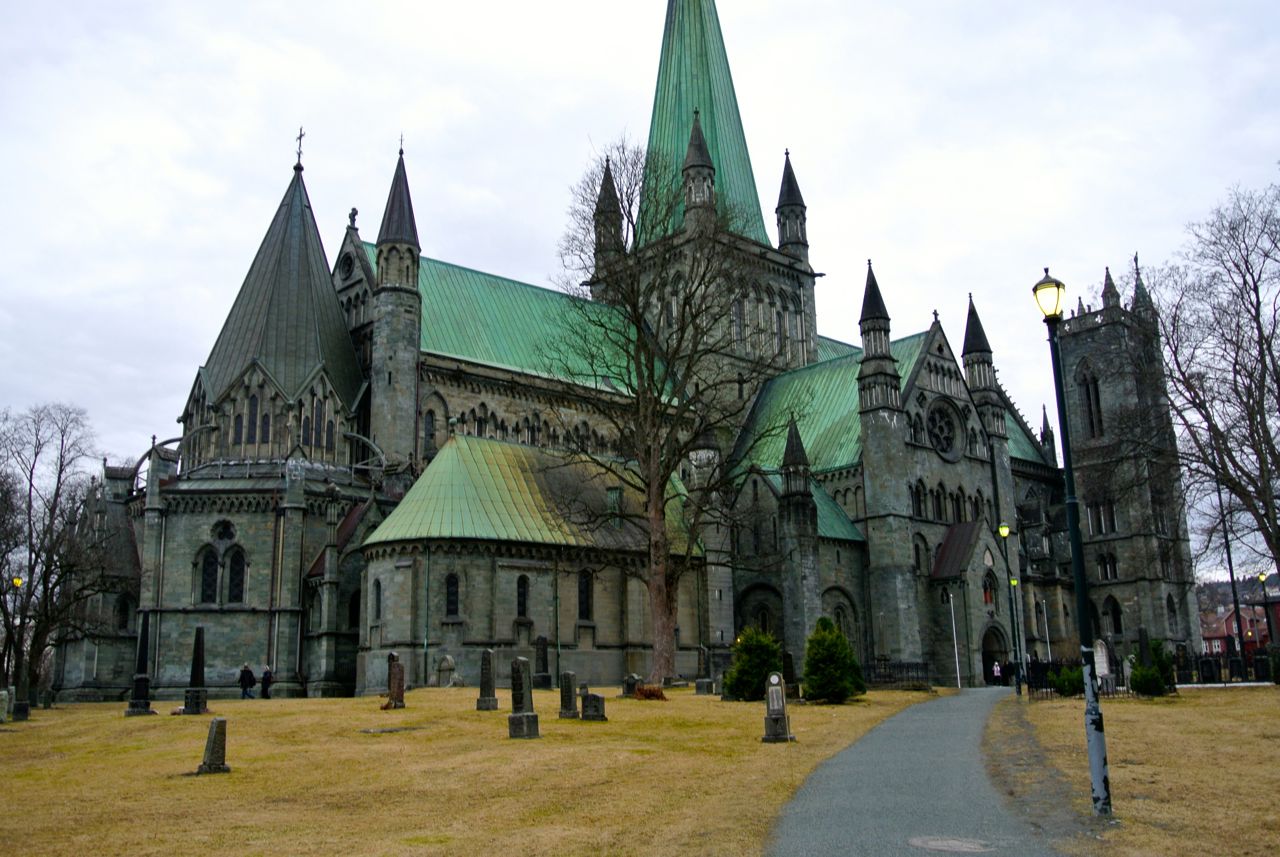
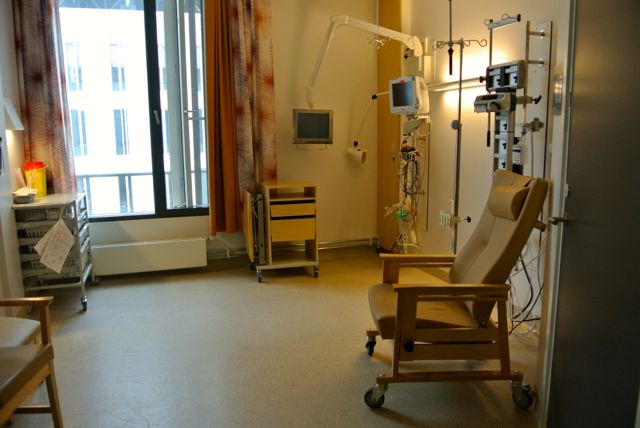
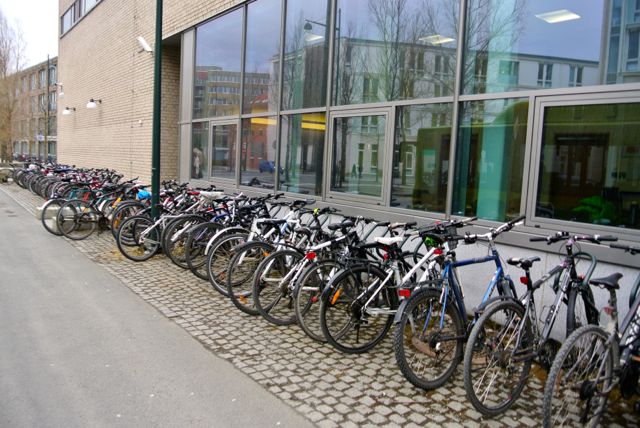
It's great to have friends living around the world. As the ship sailed north from Bergen, we were able to connect with a Norwegian friend who lives in Trondheim. (We had first met him at a medical conference in Phoenix eighteen years ago.) We had last seen him in 2005 in the states. He took us on a walking tour of Trondheim city center, and then on a tour of Trondheim's largest medical facility. The healthcare campus consists of multiple buildings, separated according to their specialties, spread over a several block area, and all connected with over-street enclosed walkways, so that in inclement weather one does not need to step outside to reach any part of the hospital complex.
At the end of the cruise, in a couple of days, we will meet my old friend Erik, a Norwegian-American, who lives in Bergen. Decades ago, I played in a band with Erik when we both lived and worked as musicians in California. Erik continues to work as a musician in Norway. We last saw Erik in 2009 when Susan and I sailed on our first Hurtigruten cruise. Though Erik has dual citizenship and likes to visit the US, he expects to live the rest of his life in Norway, due to its healthcare system. Erik was diagnosed and treated for prostate cancer while living in Norway. He feels that he would be dead today if he had been living in the US, because he could not have afforded to privately pay the cost of tests, which resulted in his early cancer detection and treatment, tests which were free to him in Norway.

In conclusion, let me give one more unsolicited endorsement of the Hurtigruten Cruise. This is only the fourth cruise that Susan and I have ever paid for. We were too jaded for having been paid to cruise with Royal Viking Lines all those years. (Previous cruises were: Celebrity Cruise Line from Alaska to Vancouver, Viking River Cruise from Budapest, Hungary, to Passau, Germany, and our first Hurtigruten Cruise in 2009.) We just enjoyed it so much the first time that we wanted to do it again. I met one German lady this week for whom this was her tenth cruise! We've met several people on their fourth of fifth cruises. It's just very scenic. The food is great. And the atmosphere on the ship is very relaxing. One stimulating plus for me is that I can speak/practice my German and Swedish languages as much as I want. Probably two thirds of the passengers are Germans. There are a few English and French passengers, but not many Americans.
Susan talked with a couple today who took this cruise in December, when there's 24-hour constant darkness north of the Arctic Circle. They said that it was magic. They took the dogsled excursion (which Susan and Linn took on this trip) in darkness, which they said was magical. The crew makes special holiday dishes and creates a cozy holiday atmosphere around the ship. Prices for cruise tickets are half the cost of what they are during summer/high season (when there's 24-hours a day of sunlight). So don't be surprised if, one of these future Decembers, Susan and I repeat this cruise.
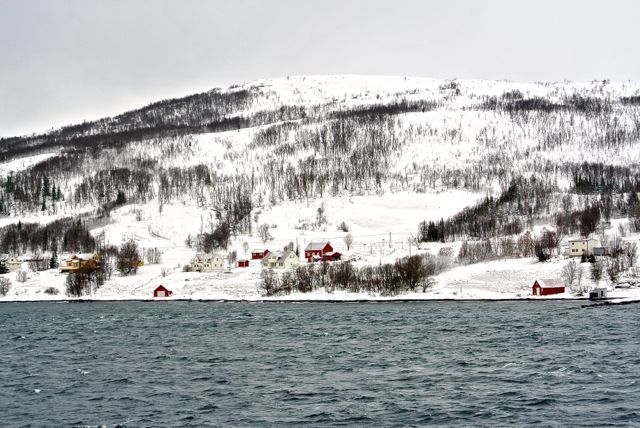

We finally saw some Northern Lights last night! The ones we saw were not as dramatic as some videos of them I've seen. But they were magic, nonetheless, a green curtain shimmering in a band across the lower part of the northern sky. It was only our second cloudless night. Today, it's grey and snowing again. So we might not get the chance to see them again this trip. On a future winter trip, during the time of 24-hour darkness, assuming some clear weather, we will have much more opportunity to see the Northern Lights.

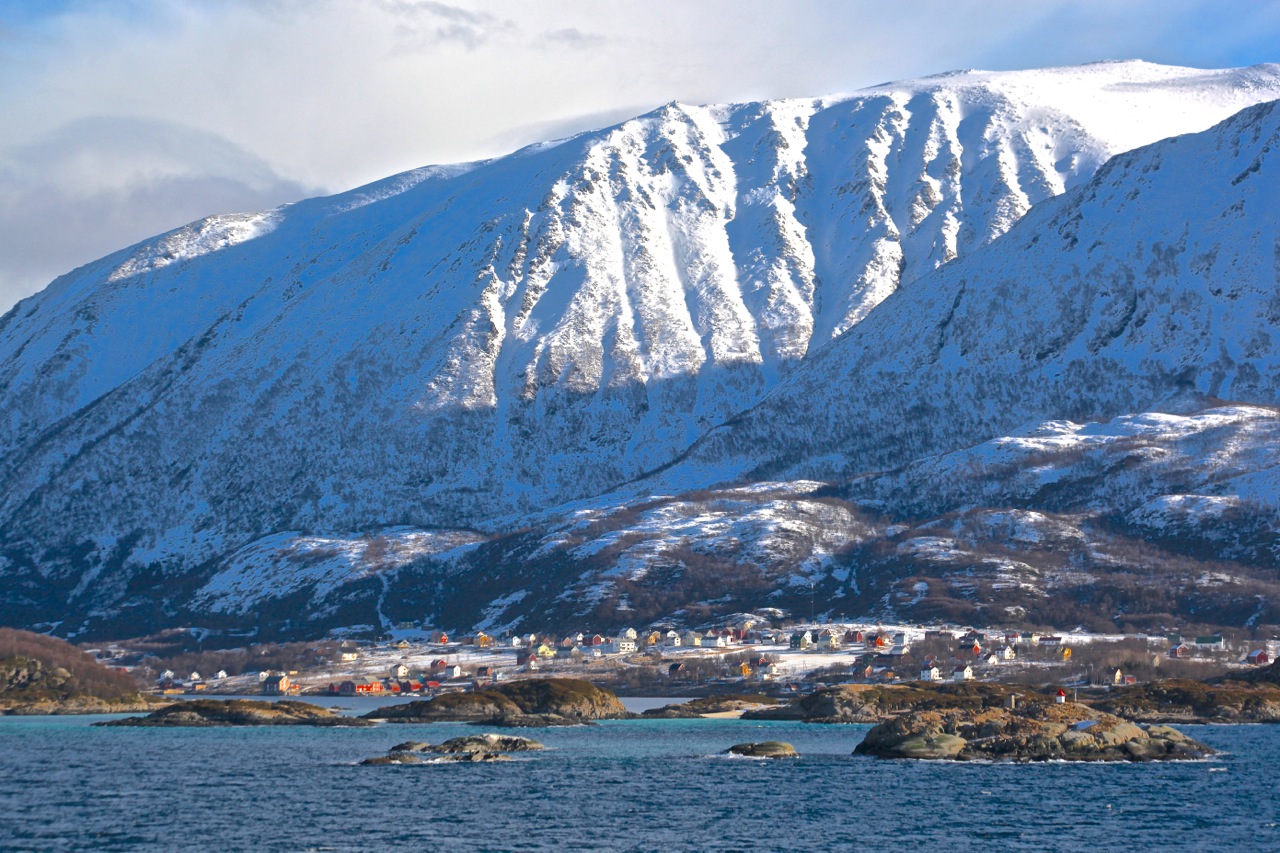
0 Comments on Norway: Life Above the Arctic Circle
Join the Conversation